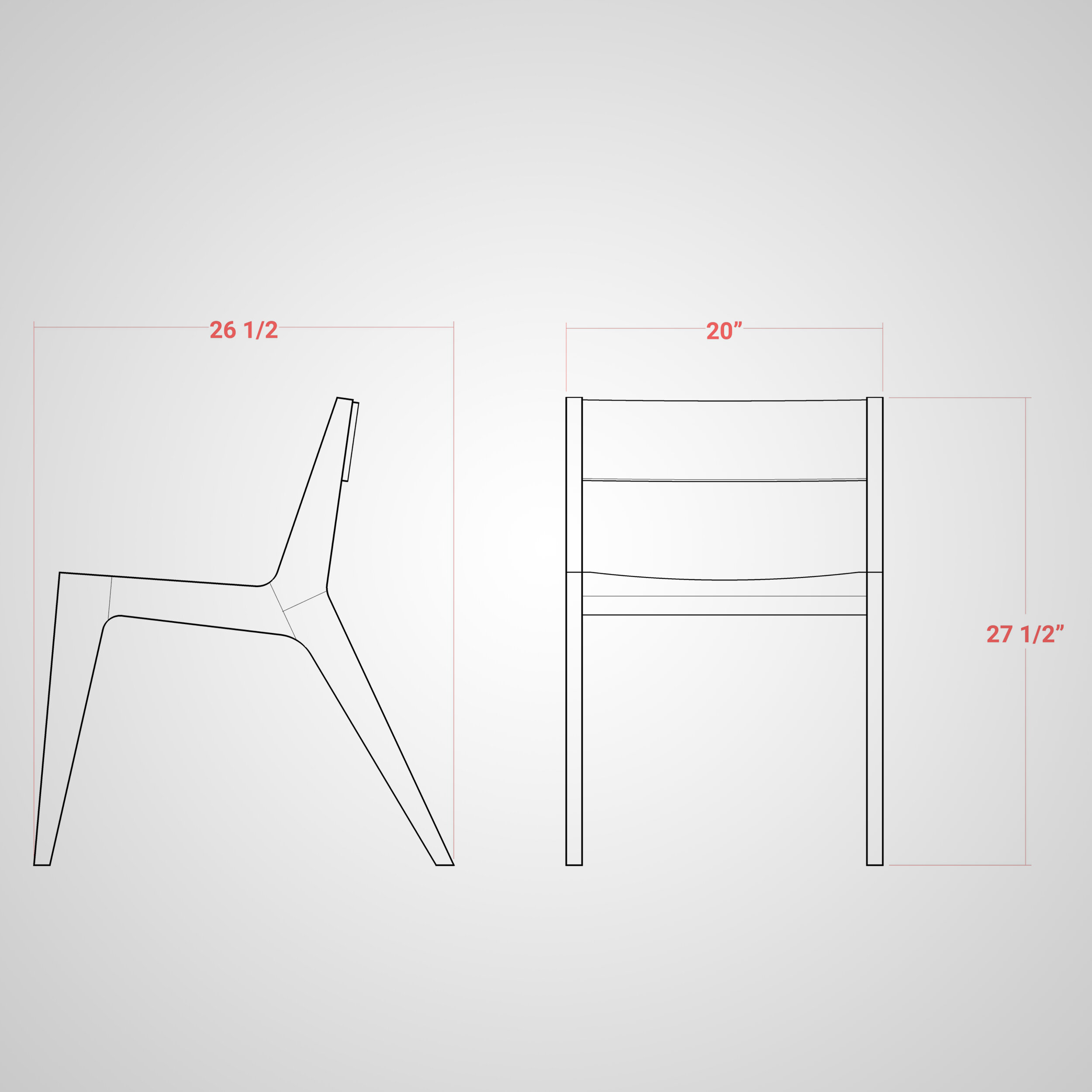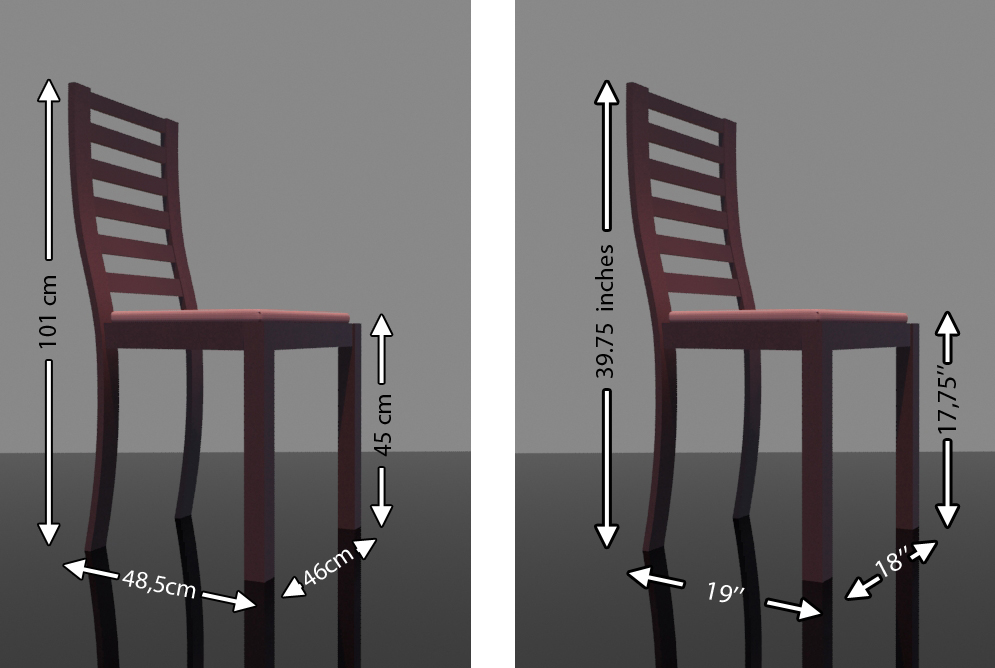Standard Dining Chair Dimensions: Dining Chair Dimensions In Inches

Dining chairs are essential furniture pieces for any dining area, providing comfort and support while enjoying meals. Understanding the standard dimensions of dining chairs is crucial for ensuring proper fit and functionality within the dining space.
Standard Dining Chair Dimensions
The dimensions of a standard dining chair can vary depending on the chair style and design. However, there are general guidelines for the average dimensions of a standard dining chair, as shown in the table below:
| Dimension | Average Dimension (inches) |
|---|---|
| Seat Height | 18-20 |
| Seat Width | 18-20 |
| Seat Depth | 16-18 |
| Overall Height | 36-40 |
| Overall Width | 20-24 |
Variations in Dining Chair Dimensions Based on Style
Dining chair dimensions can vary based on the style and design of the chair. Some common variations include:
- Armless Chairs: Armless chairs generally have a smaller overall width and depth compared to chairs with arms. They are often preferred for smaller dining spaces or when space is limited.
- Chairs with Arms: Chairs with arms typically have a wider overall width and depth to accommodate the armrests. They provide additional support and comfort, but may require more space at the dining table.
- Chairs with Backrest: The height of the backrest can also influence the overall height of the chair. Higher backrests provide more support and comfort, but may be less suitable for shorter individuals.
Dining Chair Dimensions for Different Table Types
The dimensions of dining chairs should be considered in relation to the type of dining table being used. Different table shapes and sizes may require different chair dimensions to ensure a comfortable and functional dining experience.
- Round Tables: For round tables, chairs with a smaller overall width and depth are often preferred, as they allow for more seating space around the table. Armless chairs are a popular choice for round tables, as they provide a more compact and streamlined look.
- Square Tables: Square tables can accommodate chairs with a wider overall width and depth, as there is more space around the table. Chairs with arms are a good option for square tables, as they provide additional support and comfort.
- Rectangular Tables: Rectangular tables can accommodate a variety of chair styles and dimensions. The length of the table will determine the number of chairs that can be comfortably seated around it. Armless chairs are often used at the ends of rectangular tables, while chairs with arms are used at the sides.
- Oval Tables: Oval tables offer a balance between the functionality of a rectangular table and the elegance of a round table. They can accommodate chairs with a variety of dimensions, but chairs with a smaller overall width and depth are often preferred for a more streamlined look.
Factors Influencing Dining Chair Dimensions

Dining chair dimensions are not merely aesthetic considerations; they play a crucial role in ensuring comfort, functionality, and overall dining experience. The dimensions of a dining chair must be carefully chosen to complement the dining table, the room’s size, and the personal preferences of the users.
Dining Table Size
The size of the dining table is a primary factor influencing dining chair dimensions. The chairs should be proportionate to the table, leaving enough space for comfortable seating and movement around the table. For instance, if the table is small and compact, smaller chairs would be appropriate, while a large table requires larger chairs to accommodate more people.
Room Size
The size of the dining room also influences the choice of dining chair dimensions. The chairs should be sized to allow for comfortable movement within the room, leaving enough space for walking around the table and opening doors. For example, in a small dining room, compact chairs with a smaller footprint would be ideal.
Personal Preferences
Personal preferences play a significant role in choosing dining chair dimensions. Factors such as height, weight, and comfort level influence the ideal chair size and style. Some people prefer chairs with higher backrests for better support, while others may prefer chairs with lower backrests for a more casual feel.
Dining Table Height
The height of the dining table is another crucial factor influencing dining chair dimensions. The chair height should be proportionate to the table height, ensuring comfortable seating and posture. The standard rule of thumb is to have a chair height that is 16-18 inches lower than the table height. For example, a 30-inch-high table would require a chair with a seat height of 12-14 inches.
User’s Height
The height of the user is equally important in determining the ideal dining chair dimensions. The chair should provide adequate legroom and support for the user’s height. The seat height should be comfortable for the user’s legs, allowing them to sit with their feet flat on the floor. For example, a tall person may require a chair with a higher seat height, while a shorter person may prefer a chair with a lower seat height.
Ergonomic Considerations, Dining chair dimensions in inches
Ergonomic considerations are crucial in ensuring comfort and ease of use for dining chairs. The dimensions of the chair should promote good posture and minimize strain on the back, neck, and shoulders. For example, chairs with adjustable backrests and armrests can provide greater comfort and support for users of different heights and body types.
Designing Dining Chair Dimensions for Specific Needs

Dining chair dimensions are crucial for ensuring comfort and accessibility, especially for individuals with specific needs. By tailoring chair dimensions to meet these needs, you can create a more inclusive and user-friendly dining experience.
Dining Chair Dimensions for Individuals with Disabilities
Designing dining chairs for individuals with disabilities requires careful consideration of their specific needs and limitations. The goal is to ensure comfortable and safe seating while promoting independence.
- Height: Wheelchair users require chairs with a seat height that aligns with their wheelchair seat height, typically between 17 and 19 inches. This ensures a smooth transfer from the wheelchair to the chair without straining or reaching.
- Seat Depth: A seat depth of 16 to 18 inches allows for adequate legroom and prevents the chair from pressing against the back of the knees. This is crucial for individuals with limited mobility or who use assistive devices.
- Seat Width: A seat width of 18 to 20 inches provides ample space for individuals who use wheelchairs or have limited mobility. This prevents discomfort and allows for comfortable positioning.
- Armrest Height: Armrests should be adjustable or positioned at a height that allows for easy access and prevents strain on the arms and shoulders. For wheelchair users, armrest height should be compatible with their wheelchair armrests to facilitate transfers.
- Backrest Height: A backrest height of 18 to 20 inches provides adequate support and prevents slouching. For individuals with limited mobility, a higher backrest may be preferred for additional support and stability.
Dining Chair Dimensions for Different Age Groups
Dining chair dimensions should also be tailored to the specific needs of different age groups, ensuring comfort and safety for everyone at the table.
| Age Group | Seat Height (inches) | Seat Depth (inches) | Seat Width (inches) | Backrest Height (inches) |
|---|---|---|---|---|
| Children (2-5 years) | 10-12 | 12-14 | 14-16 | 14-16 |
| Children (6-10 years) | 12-14 | 14-16 | 16-18 | 16-18 |
| Adults | 17-19 | 16-18 | 18-20 | 18-20 |
| Seniors | 16-18 | 14-16 | 16-18 | 18-20 |
Tips for Choosing Dining Chair Dimensions
Selecting dining chair dimensions that accommodate different body types and seating preferences is essential for creating a comfortable and enjoyable dining experience.
- Consider Body Size: Choose chairs with a seat width and depth that provide ample space for individuals of varying sizes. A wider seat width is beneficial for larger individuals, while a deeper seat depth can accommodate longer legs.
- Assess Seating Preferences: Some individuals prefer a more upright seating position, while others prefer a more reclined position. Consider the backrest angle and height when selecting a chair to ensure it aligns with individual preferences.
- Think About Armrests: Armrests can provide additional support and comfort, but they should be positioned at a height that allows for easy access and prevents strain on the arms and shoulders. Avoid chairs with armrests that are too high or too low, as this can cause discomfort.
- Prioritize Comfort and Support: The most important factor when choosing dining chair dimensions is comfort. Select chairs with a seat that is well-padded and provides adequate support for the back and legs. A chair that is too hard or too soft can cause discomfort and make it difficult to sit for extended periods.
Dining chair dimensions in inches – You know, when you’re shopping for dining chairs, those inches really matter. You want something comfy but also fits your table perfectly. Check out the realyn dining room chair – it’s got a sleek design and those dimensions are just right.
Knowing those chair dimensions in inches can save you a lot of hassle and ensure your dining space is on point, man.
Yo, need to know the perfect dining chair dimensions in inches? It’s all about finding the sweet spot for comfort and style, right? If you’re feeling a bit fancy, check out curved wood dining chairs , they’re seriously sleek and add a touch of class.
Once you’ve got the right dimensions, your dining area will be the envy of all your friends!
